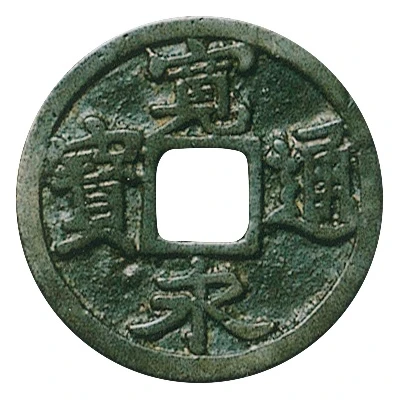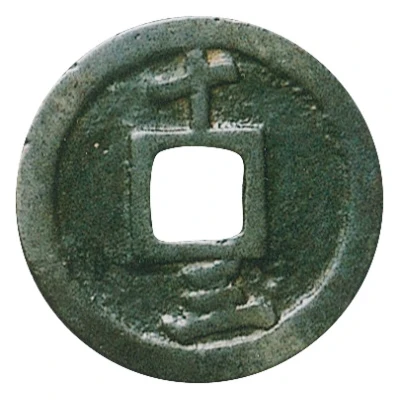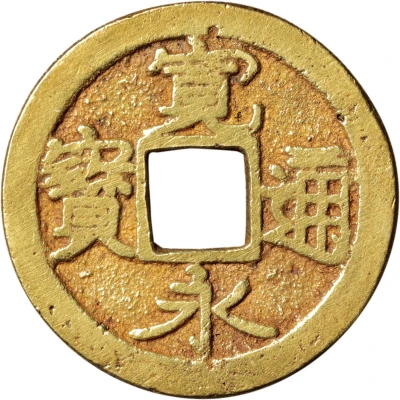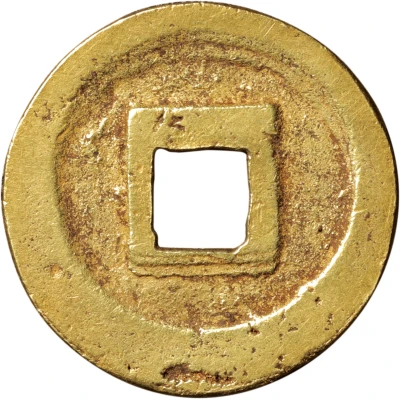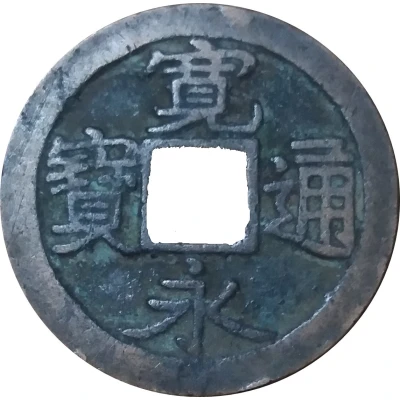
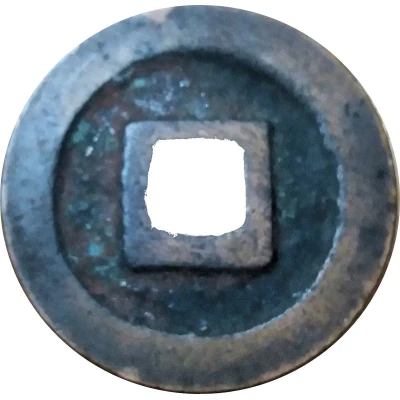

1 Mon "Kan'eitsūhō" Old type ND
| Copper | 3 g | 24 mm |
| Issuer | Japan |
|---|---|
| Type | Standard circulation coin |
| Years | 1636-1656 |
| Value | 1 Mon |
| Currency | Mon (683-1953) |
| Composition | Copper |
| Weight | 3 g |
| Diameter | 24 mm |
| Thickness | 1 mm |
| Shape | Round with a square hole |
| Technique | Cast |
| Orientation | Medal alignment ↑↑ |
| Demonetized | Yes |
| Updated | 2024-10-06 |
| Numista | N#121450 |
|---|---|
| Rarity index | 26% |
Reverse
Blank, with rim and square center raised.
Edge
Plain
Comment
This type are first coin casted for general circulation in 1636 after the currency reform. The value of Kan'eitsūhō was set at par with Bita, which could purchase a sardine (iwashi), a piece mochi, or 1 Gō of salt (about 0.18 litre). The general exchange rate, which was set in 1609 as Gold 1 Ryō = Silver 50 Monme = 4000 Mon (Bita).However, as the large number of Kan'eitsūhō went into circulation, the value dropped compare to silver. In 1638, 1000 Mon was about 23 Monme of Silver. Next year, 1639, it dropped to 16 Monme. The government did control the situation by stopping production of some Zeniza, and withdrawal some amount from circulation. The price went down to the lowest point of 12 Monme, but in the mid-1650s, the price raised bak to 18 Monme. In 1653 and 1656, more Zeniza were established, resuming producing the coins. Kan'eitsūhō were produced until the end of Edo period despite the Kan'ei era ended in 1645.
Old Kan'eitsūhō coins are produced until 1659. No more official copper coins were produced for circulation until the new type of Kan'eitsūhō begin to be produced and released in 1668.
________
To distinguish from the new type, the old type will have the legs of "寶" connected (look like ス), while the new type will have the legs of "寶" separated.
Interesting fact
The 1 Mon "Kan'eitsūhō" (Old type) ND (1636-1656) coin from Japan was made of copper, but it was also one of the first coins to use a unique blend of metals called "Kan'eitsūhō" which is a combination of copper, tin, and lead. This blend was used to create a distinctive color and durability that was unique to Japanese coins at the time.
Price
| Date | Mintage | VG | F | VF | XF | AU | UNC |
|---|---|---|---|---|---|---|---|
| ND (1636) | - | - | - | - | - | - |
Values in the table are based on evaluations by sales realized on Internet platforms. They serve as an indication only for 1 Mon "Kan'eitsūhō" (Old type) ND (1636-1656) coin.
